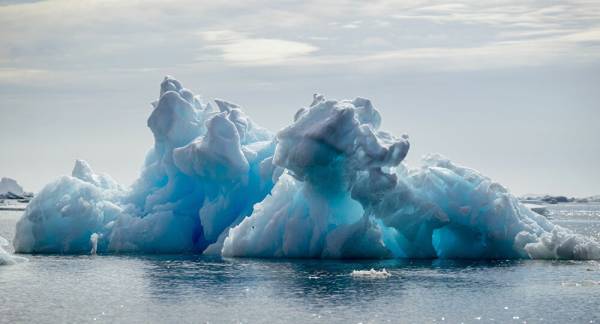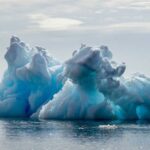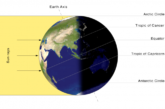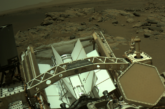
As a result of current global warming trends, Greenland is losing tons of ice each second and is expected to be free of ice in several hundred years, or possibly less. The giant glacier that covers the largest part of Greenland is over 200,000 years old and its thickness in some parts reaches 3,000 meters.
After many years of research on the Greenland ice sheet, scientists have developed a relief map of the island’s surface, currently hidden under ancient but now rapidly-melting ice. One intriguing element that can be seen is a giant canyon over 750 kilometers long and more than 10 kilometers wide.
At the bottom of the canyon, and currently under a multi-kilometer layer of ice, geologists have discovered a gigantic ancient lake of nearly 70,000 square kilometers, formed from meltwater gushing down through the ice cover as a result of global warming. The temperature of the lake is believed to stand slightly above the freezing point, with a thick coat of snow serving as protection from significantly low temperatures.
©
CC BY 2.0 / Flickr/NASA Goddard Space Flight CenterStreams and rivers that form on top of the Greenland ice sheet during spring and summer are the main agent transporting melt runoff from the ice sheet to the ocean
Greenland also hides at least two meteorite impact craters, located in the northwest area of the island, 36 and 31 kilometers wide. Scientists believe that the smaller one formed due to a fall of the rarest iron meteorite, as sediment samples from the crater contain, among other things, high amounts of nickel, cobalt, chromium and even gold. Iron meteorites make up about 8 percent of all of Earth’s meteorites.
The ice also covers fossil plants. Ancient remnants are said to have been a forest at some point. The existence of the fossils points out that Greenland did not have an ice sheet during at least one period over the last several million years.
Scientists hope to find clues of Greenland’s prehistoric life at a huge basin said to have been left behind when an ancient lake dried up. Its bed is believed to contain a 1.8-kilometer thick layer of sedimentary cover formed when Greenland was not covered with ice.
The current ice sheet ice covers the island’s numerous mountain ranges and plunging fjords that surround the bowl-like depression in the center of Earth’s largest island island. The ice layer puts enormous pressure on Greenland’s surface, and geologists predict that when all the melt ice goes to the ocean, the island will rise above current levels.
Sourse: sputniknews.com





